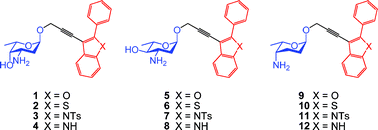Synthesis and DNA-binding affinity studies of glycosylated intercalators designed as functional mimics of the anthracycline antibiotics†
Abstract

* Corresponding authors
a
Alberta Ingenuity Centre for Carbohydrate Science and Department of Chemistry, The University of Alberta, Gunning-Lemieux Chemistry Centre, AB T6G 2G2, Edmonton, Canada
E-mail:
tlowary@ualberta.ca
b Department of Chemistry, The Ohio State University, 100 West 18th Avenue, Columbus, OH, USA

 Please wait while we load your content...
Something went wrong. Try again?
Please wait while we load your content...
Something went wrong. Try again?
W. Shi, R. S. Coleman and T. L. Lowary, Org. Biomol. Chem., 2009, 7, 3709 DOI: 10.1039/B909153J
To request permission to reproduce material from this article, please go to the Copyright Clearance Center request page.
If you are an author contributing to an RSC publication, you do not need to request permission provided correct acknowledgement is given.
If you are the author of this article, you do not need to request permission to reproduce figures and diagrams provided correct acknowledgement is given. If you want to reproduce the whole article in a third-party publication (excluding your thesis/dissertation for which permission is not required) please go to the Copyright Clearance Center request page.
Read more about how to correctly acknowledge RSC content.
 Fetching data from CrossRef.
Fetching data from CrossRef.
This may take some time to load.
Loading related content
